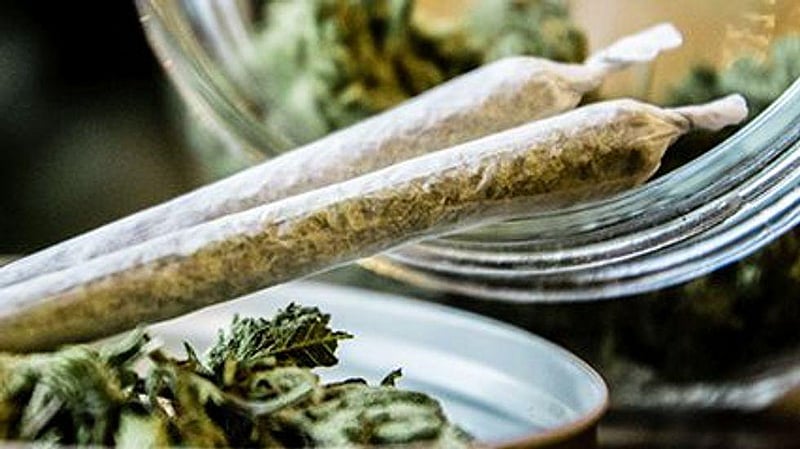If you are having trouble with our mobile app, you must remove and reinstall the app on your device.
Updating the app alone will not fix the issue. Your login will not be impacted. We sincerely apologize for this inconvenience.
Market Pharmacy is now G&G Pharmacy, conveniently located in Marketplace Foods on the corner of Hwy 2 & Broadway!
Same great staff and same great care!
Manténgase sano!

- Posted June 28, 2022
Odds for Emergency Room Visits Rise With Pot Use
Toking up increases your risk of landing in the hospital, a new study reports.
Recreational marijuana use was associated with 22% greater odds of needing to visit an emergency room or be hospitalized, Canadian researchers found.
The study showed physical injuries, lung ailments and gastrointestinal problems were the top three reasons why pot users had to go to the hospital.
Pot is "a product that is now decriminalized and is being used with increasing frequency, and at least some portion of the population thinks it's benign, doesn't cause problems, can be used safely," said lead researcher Dr. Nicholas Vozoris, an assistant professor of respirology at the University of Toronto.
"We're showing that it is associated with a significant risk of an important kind of hard outcome -- coming to the emergency room and being hospitalized," he said.
The findings were published June 27 in BMJ Open Respiratory Research.
For the study, Vozoris and his colleagues analyzed health records of more than 35,000 residents of Ontario who were between 12 and 65 years of age. Of those, nearly 6,500 had used cannabis within the past year. The data spanned 2009 to 2015.
The increased odds that cannabis users would need emergency care or hospitalization held up even after researchers controlled for such factors as other illicit drug use, alcohol use, tobacco smoking and a variety of other mental health issues, Vozoris said.
About 15% of the ER visits and hospitalizations were due to acute trauma; 14% to respiratory issues, and 13% to gastrointestinal illnesses, the study showed.
Vozoris said there are a number of potential explanations for why pot use might lead to physical injury.
"Some of that might be increased motor vehicle accidents related to cannabis-related drowsiness or altered level of consciousness," he said. "Some of that might be falls and fractures from, again, a cannabis-related altered level of consciousness or drowsiness. Some of it might be the cannabis making someone anxious or mentally unstable and then getting into physical altercations or injuring themselves."
The overall risk of death did not differ significantly between the two groups, the study found.
Leaders of NORML, a group advocating for reform of U.S. marijuana laws, downplayed the findings.
Because the study was observational, it "does not indicate whether cannabis consumption was directly linked to the actual events triggering admittance," said NORML's political director Morgan Fox.
"This is a highly speculative corollary only," Fox added.
NORML Deputy Director Paul Armentano added that the findings run counter to other studies that found no increased risk of injury among marijuana users.
But Linda Richter, vice president of prevention research and analysis at the Partnership to End Addiction, said the study is further evidence of the unintended consequences that could come with the spreading legalization of pot.
"The growing notion that marijuana use is harmless and even medicinal for the general public -- a belief pushed by the cannabis industry and the legalization movement -- is especially dangerous given the steep rise in the drug's potency in recent years, the many toxic chemicals that are in the various types of marijuana products, and the increasing accessibility of the drug to people of all ages, especially children and adolescents who are most vulnerable to its effects," Richter said.
"As more and more states legalize the drug, it is essential for them to launch effective public education efforts to dispel the myths and inaccuracies propagated by those who stand to gain financially from broader use of the drug," Richter added.
More information
The U.S. National Institute on Drug Abuse has more about marijuana.
SOURCES: Nicholas Vozoris, MD, assistant professor, respirology, University of Toronto, Ontario, Canada; Morgan Fox, political director, NORML, Washington, D.C.; Paul Armentano, deputy director, NORML, and chair, science, Oaksterdam University, Oakland, Calif.; Linda Richter, PhD, vice president, prevention research and analysis, Partnership to End Addiction, New York City; BMJ Open Respiratory Research, June 27, 2022






